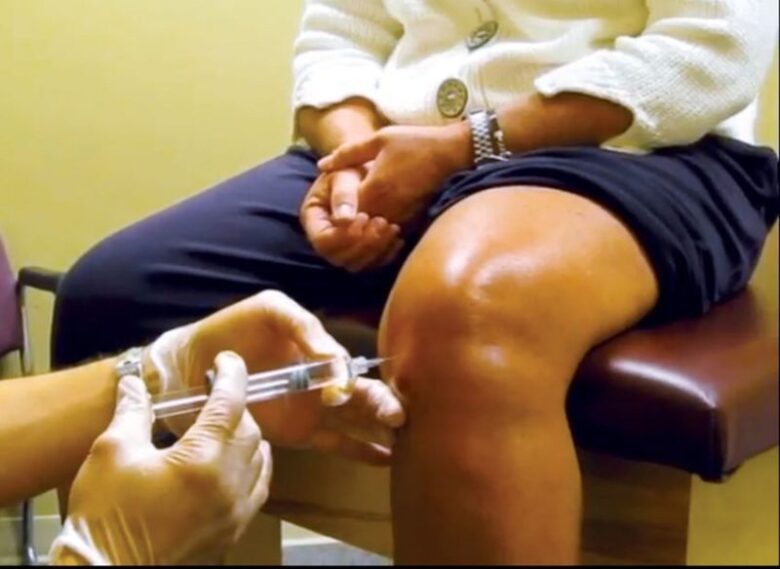When oral medicines such as Dona, physiotherapy or exercises fail to give pain relief in osteoarthritis (OA) of knee pain, there are several non-operative interventions or injection procedures that may give significant relief and help to avoid knee replacement surgeries. The following are some interventional pain management procedures that are like some injections which may reduce total knee replacement surgeries.
1. Intraarticular steroid injections

Patients with severe pain of the knee, joint effusions (fluid inside knee joint) and clinical signs of inflammation may get benefits by intraarticular injections of corticosteroids (triamcinolone or methylprednisolone). This may be effective for a few months in reducing pain and increasing quadriceps femoris strength. Some patients would require two to three injections in a year. But repeated injections of steroids must be avoided as it may cause further damage to the cartilage. It must be done with sterile precautions to avoid infection, though the infection rate is negligible. Typically, gentle flare-up could be seen in joint inflammation following intraarticular injections and pain relief starts after 24 to 48 hours.
2. Tidal irrigation of knee joint
The principle is clearing the inflammatory mediators, debris, trash and breaking adhesions. Closed knee irrigation with normal saline is done under local anesthesia; this can be as good as arthroscopic irrigation of knee joint. Saline is infused into the knee to distend the capsule and then it is withdrawn and drained. A total volume of one to two liters is employed for this type of irrigation. Patients feel improvement in their joint quality and reduction of joint stiffness. This procedure should be done under strict sterile precautions. You can learn more about this procedure on Daradia website.
3. Prolotherapy and Prolozone therapy

Injection of tissue proliferate (like ozone gas, hypertonic dextrose, etc) within the joint and around the joint reduces pain, inflammation and strengthen the ligaments. it’s additionally claimed that it may promote cartilage growth.
4. Visco-supplementation
High molecular weight hyaluronic acid resembling synovial fluid is useful notably in early osteoarthritis with knee pain. It lubricates the joints, increases stress-bearing capacity. High molecular weight hyaluronic acid also has some anti-inflammatory property that lasts for a long time and improves the low-grade inflammation which is an essential component of osteoarthritis of the knee.
5. Platelet Rich Plasma Injection

Like its usefulness in different degenerative diseases, it’s helpful in degenerative arthritis of knee also. It’s changing the OA knee management throughout the globe. Here 30 to 40 ml of blood is withdrawn and mixed with anticoagulant like acid citrate dextrose. This anticoagulant also activates platelets. The blood is then transferred in a kit and centrifuged at 3000 – 4000 rpm for 10-15 minutes. Then the blood particles are separated in different layers. Platelet-rich plasma part is then filtered and injected in the knee joint. This causes pain reduction and proliferation of degenerated cartilages.
6. Radio-Frequency Procedure
This procedure is a very effective procedure in knee pain and cooled radiofrequency is approved by US FDA. Pain signals traveling via Genicular nerves from the knee are blocked with this procedure. This procedure can give pain relief for around two years.
All these non-operative interventions are helpful to reduce the pain of osteoarthritis of Knee. Even you can wear a knee brace from Aidfull to minimise the impact that high intensity repetitive strain can cause on their knee joints and ligaments. Many athletes, footballers, weightlifters and runners already use those.


